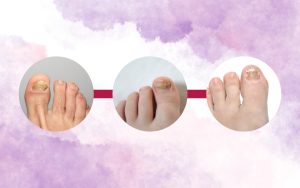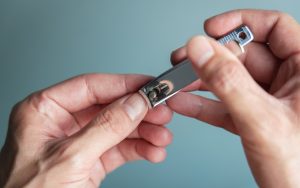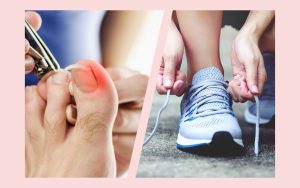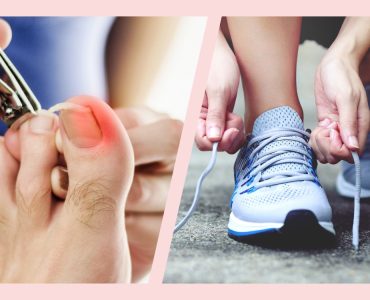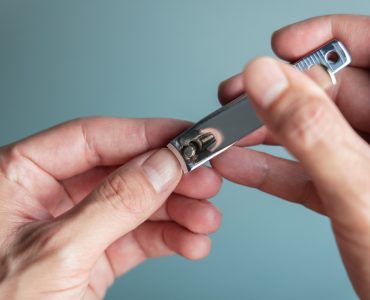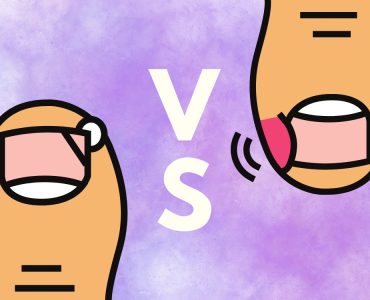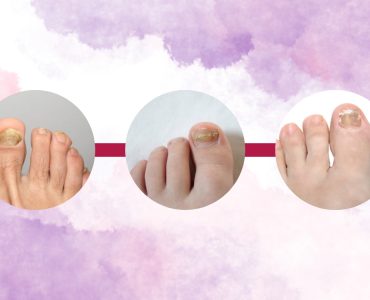Dealing with the discomfort and pain caused by an ingrown nail can be incredibly frustrating. Whether it’s a result of improper nail trimming, wearing tight shoes, or genetic factors, this condition can make even the simplest tasks agonizing.
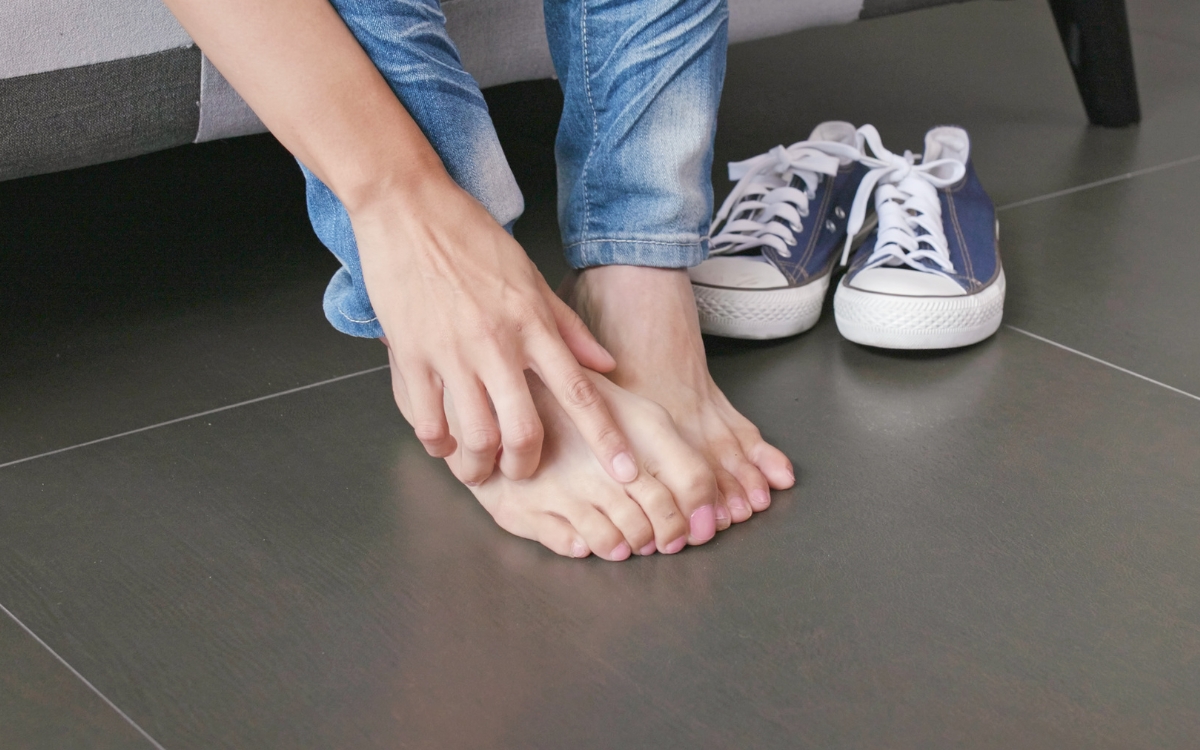
While seeking medical attention is always recommended, there are several effective home remedies that can provide relief from ingrown nail pain. In this blog post, we will explore some tried and tested remedies that can help alleviate your discomfort, allowing you to regain control of your daily life without the constant annoyance of an ingrown nail.
Home Remedies for Immediate Relief
When you’re dealing with the discomfort of an ingrown nail, immediate relief becomes a top priority. The throbbing pain, tenderness, and inflammation can make even the simplest tasks excruciating.
While seeking professional medical advice is always recommended, there are several effective home remedies that can provide temporary relief from the pain and inflammation associated with ingrown nails. Here are some remedies you can try at home:
Soothing Warm Water Soaks
One of the most accessible and effective home remedies for immediate relief from ingrown nail pain is a warm water soak. Soaking your affected foot in warm water helps reduce inflammation, ease pain, and soften the surrounding skin.
Fill a basin or tub with comfortably warm water, ensuring it covers your foot up to the affected nail. If desired, you can add a teaspoon of Epsom salt or a mild antiseptic solution to the water to enhance the soothing effect. Submerge your foot in the water and let it soak for about 15-20 minutes.
The warmth of the water promotes blood circulation, helping to alleviate pain and reduce swelling. Repeat this process a few times a day for optimal relief. Remember to dry your foot thoroughly after each soak to prevent moisture buildup and potential infection.
Elevation and Ice Packs
Elevating your foot and applying ice packs to the affected area can provide immediate relief from the pain and swelling caused by an ingrown nail. Elevating your foot above heart level helps reduce blood flow to the area, minimizing inflammation and discomfort.
Find a comfortable position where you can elevate your foot, such as propping it up on a few pillows. By doing so, you encourage the excess fluid to drain away from the ingrown nail, reducing the swelling and relieving the pressure.
Additionally, applying ice packs wrapped in a thin cloth or towel to the ingrown nail can numb the area and alleviate pain. Leave the ice pack on for about 10-15 minutes at a time, and repeat as needed throughout the day. Remember to have breaks between icing sessions to prevent frostbite or skin damage.
Over-the-Counter Pain Relief
Over-the-counter pain relief medications, such as nonsteroidal anti-inflammatory drugs (NSAIDs), can be beneficial in managing the pain and inflammation associated with an ingrown nail. NSAIDs, like ibuprofen or naproxen, can help reduce both pain and swelling.
Follow the recommended dosage instructions provided on the packaging, and if you have any concerns or preexisting medical conditions, it’s advisable to consult a pharmacist or healthcare professional before taking any medication.
Additionally, topical numbing creams or gels can provide temporary relief by numbing the affected area. These creams typically contain ingredients like lidocaine or benzocaine, which help desensitize the skin and alleviate pain. Apply these creams as directed on the packaging, taking note of any precautions or warnings.
Natural Remedies for Ingrown Nail Pain
Finding natural remedies for ingrown nail pain can be a great alternative for those who prefer a more holistic approach to healing. These remedies utilize the power of natural ingredients and are known for their anti-inflammatory, antiseptic, and soothing properties. Here are some natural remedies that can help alleviate the discomfort of ingrown nails:
Tea Tree Oil
Tea tree oil is renowned for its antiseptic and anti-inflammatory properties, making it a popular choice for treating various skin conditions, including ingrown nails. To use tea tree oil for ingrown nail pain relief, dilute a few drops of tea tree oil in a carrier oil such as coconut oil or olive oil.
Gently apply the mixture to the affected area using a cotton ball or swab. Tea tree oil helps reduce inflammation and prevents infection, providing relief from pain and promoting healing. Remember to perform a patch test before applying tea tree oil to ensure you don’t have any adverse reactions, and discontinue use if you experience any irritation.
Apple Cider Vinegar Soaks
Apple cider vinegar is known for its acidity, which can help soften the skin around the ingrown nail and reduce inflammation. To prepare an apple cider vinegar soak, mix equal parts of raw, unfiltered apple cider vinegar and warm water in a basin or tub.
Soak your affected foot in the solution for about 15-20 minutes. The acidity of apple cider vinegar helps to alleviate pain and swelling while promoting the healing process. After the soak, rinse your foot with clean water and pat it dry. It’s important to note that apple cider vinegar may cause a stinging sensation for some individuals, so if you experience any discomfort, discontinue the soak.
Epsom Salt Compress
Epsom salt, also known as magnesium sulfate, has long been used for its soothing properties and ability to reduce inflammation. To create an Epsom salt compress, dissolve a handful of Epsom salt in warm water until it forms a saturated solution.
Soak a clean cloth or cotton pad in the solution and gently place it on the affected area. Leave the compress on for about 15 minutes. The Epsom salt compress helps draw out infection, reduce pain, and soften the skin around the ingrown nail.
After the compress, rinse the area with clean water and dry it thoroughly. Be cautious if you have any skin sensitivities or allergies to Epsom salt, and discontinue use if any adverse reactions occur.
Can Ingrown Nails Be Prevented Altogether with Proper Care and Maintenance?
Preventing ingrown nails altogether is an ideal goal for anyone who has experienced the discomfort and pain associated with this condition. While it may not be possible to guarantee complete prevention in all cases, implementing proper care and maintenance techniques can significantly reduce the likelihood of developing ingrown nails. Let’s explore some key factors and practices that can help in preventing ingrown nails:
Proper Nail Trimming Techniques
One of the primary causes of ingrown nails is improper nail trimming. Cutting nails too short or rounding the edges can increase the risk of the nail growing into the surrounding skin. To prevent this, it’s important to trim your nails straight across, avoiding excessive shortening.
Use sharp, clean nail clippers and follow the natural curve of your nails. Be cautious not to cut the corners too deeply, as this can encourage ingrown nails to develop.
Choosing Proper Footwear
Wearing ill-fitting shoes, especially those that are too tight or narrow, can put pressure on the toes and increase the likelihood of ingrown nails. To prevent this, opt for shoes that provide adequate room for your toes to move freely. Look for footwear with a wide toe box and avoid narrow or pointy designs that compress the toes. Additionally, choose shoes made from breathable materials to reduce moisture and promote overall foot health.
Maintaining Good Foot Hygiene
Maintaining good foot hygiene is essential for preventing a variety of foot conditions, including ingrown nails. Keep your feet clean by washing them regularly with mild soap and lukewarm water. Dry your feet thoroughly, especially between the toes, as excess moisture can contribute to nail and skin problems.
Avoid wearing damp or sweaty socks for extended periods, and change your socks daily. By practicing good foot hygiene, you can minimize the risk of developing ingrown nails.
Avoiding Trauma to the Nails
Injuries to the nails, such as stubbing or jamming them, can increase the likelihood of developing ingrown nails. Be cautious and take steps to protect your nails from trauma. If you engage in activities that pose a risk to your nails, such as contact sports or heavy manual labor, consider wearing protective footwear or using nail guards to prevent injury.
What Are the Possible Long-Term Solutions for Recurring Ingrown Nails?
Dealing with recurring ingrown nails can be frustrating and impact your overall quality of life. While home remedies and preventive measures can provide temporary relief, it’s important to explore long-term solutions to address the underlying causes and prevent the recurrence of ingrown nails. Here are some possible long-term solutions to consider:
Partial or Total Nail Avulsion
Partial or total nail avulsion is a common procedure performed by a healthcare professional to treat severe or recurrent ingrown nails. It involves removing either a portion or the entire affected nail to allow proper healing and prevent future ingrown nails.
This procedure is typically performed under local anesthesia, and the nail may grow back naturally over time. Nail avulsion can be an effective long-term solution for individuals who experience chronic ingrown nails.
Nail Matrixectomy
For individuals with persistent or severe ingrown nails, a nail matrixectomy may be considered as a long-term solution. This surgical procedure involves removing a portion or all of the nail matrix, the tissue responsible for nail growth.
By removing the nail matrix, the affected nail will no longer grow, reducing the risk of ingrown nails. Nail matrixectomy is usually performed under local anesthesia and may require a longer recovery period compared to nail avulsion.
Orthotic Devices
In some cases, using orthotic devices can help alleviate the pressure on the toes and reduce the risk of ingrown nails. Orthotic inserts or toe spacers can help correct foot deformities, such as hammertoes or bunions, that contribute to ingrown nails. These devices help realign the toes, relieve pressure, and create a healthier environment for the nails to grow properly.
Conclusion
In summary, the pain and irritation caused by an ingrown nail can significantly impact your daily activities. However, there are numerous home remedies that can bring relief and promote healing.
From warm water soaks and proper nail trimming techniques to using dental floss or cotton to lift the nail, these remedies have proven to be effective for many individuals. It’s important to remember that while home remedies can provide temporary relief, seeking professional medical advice is crucial if your symptoms worsen or do not improve.


